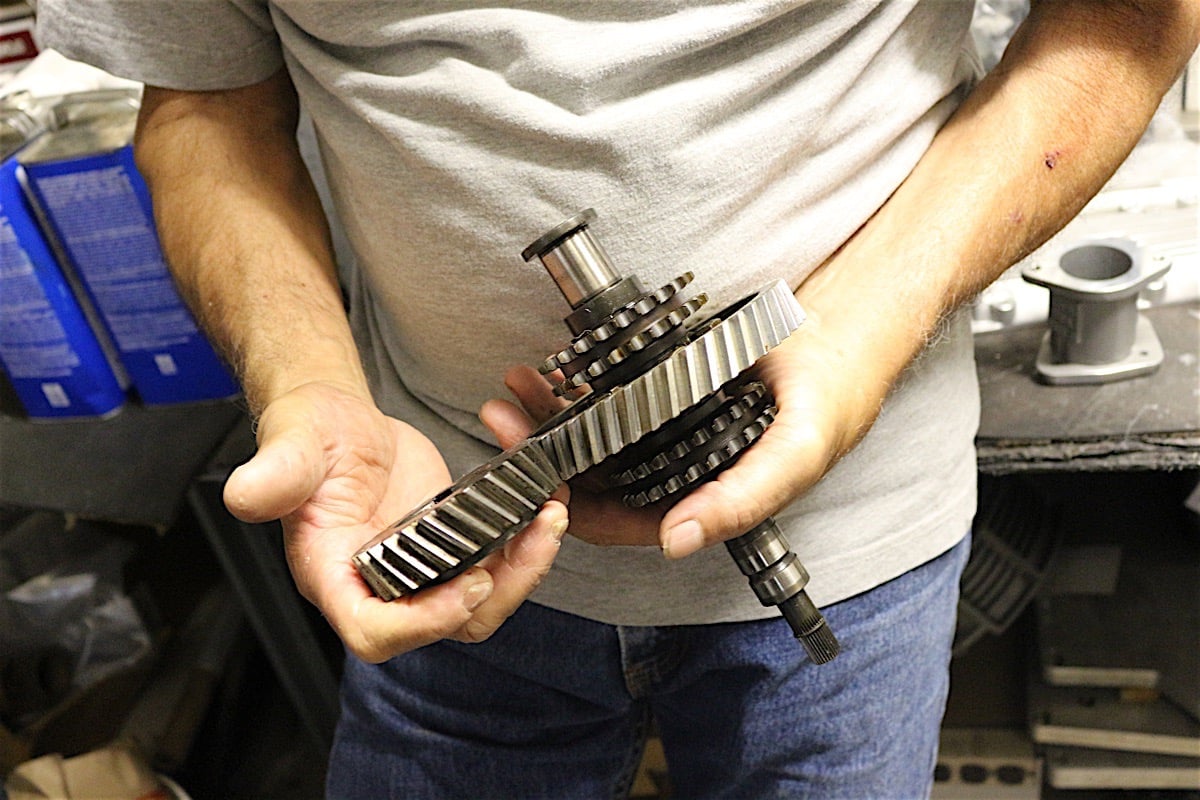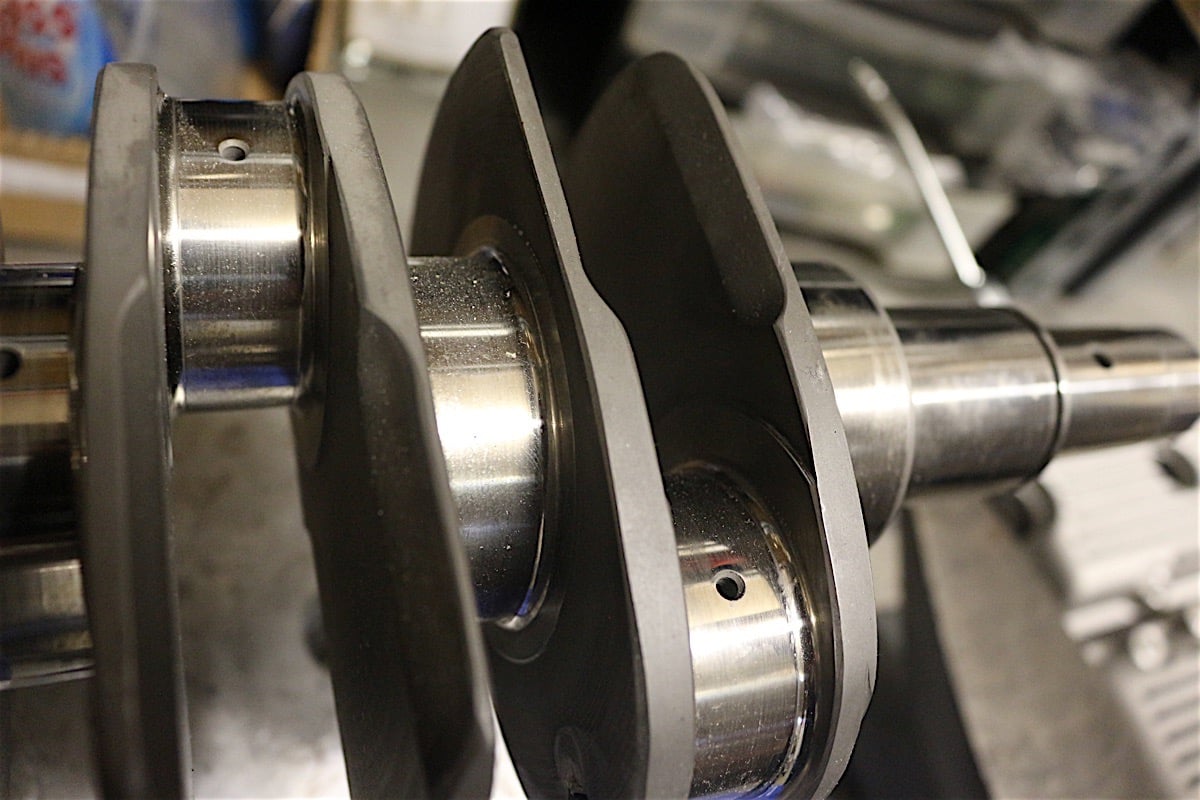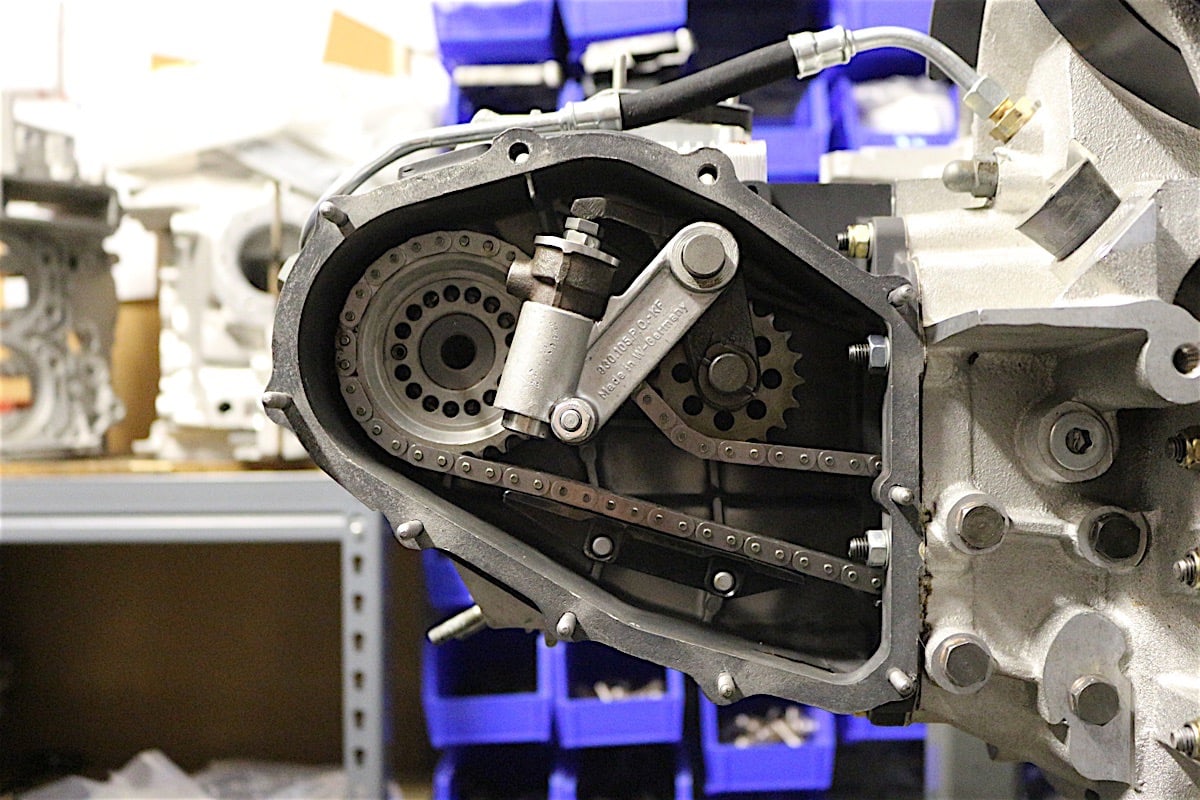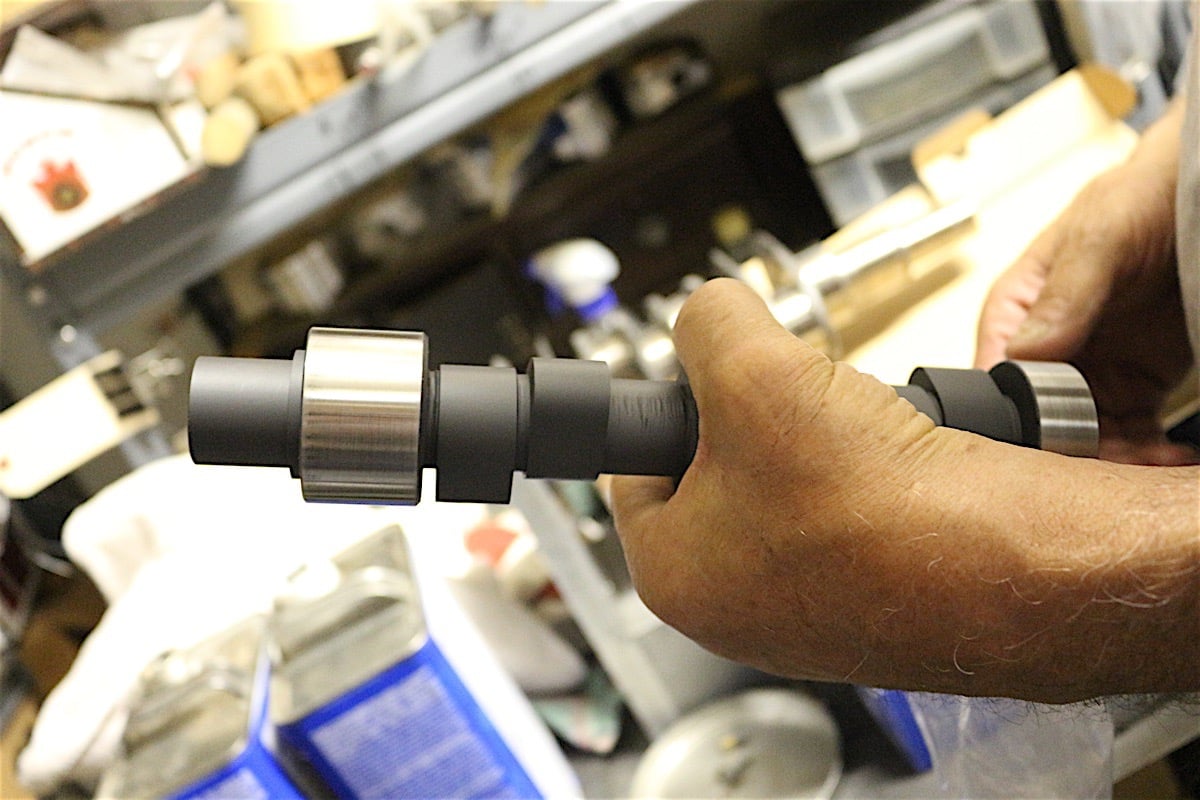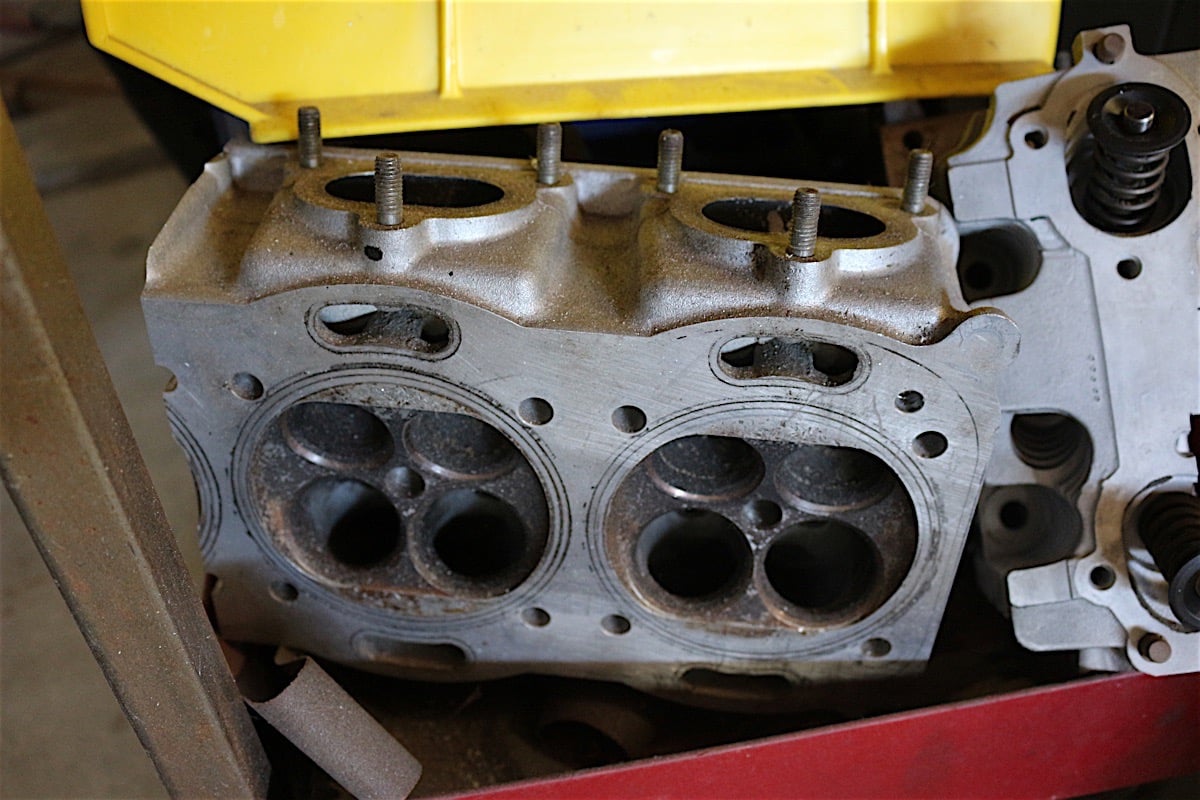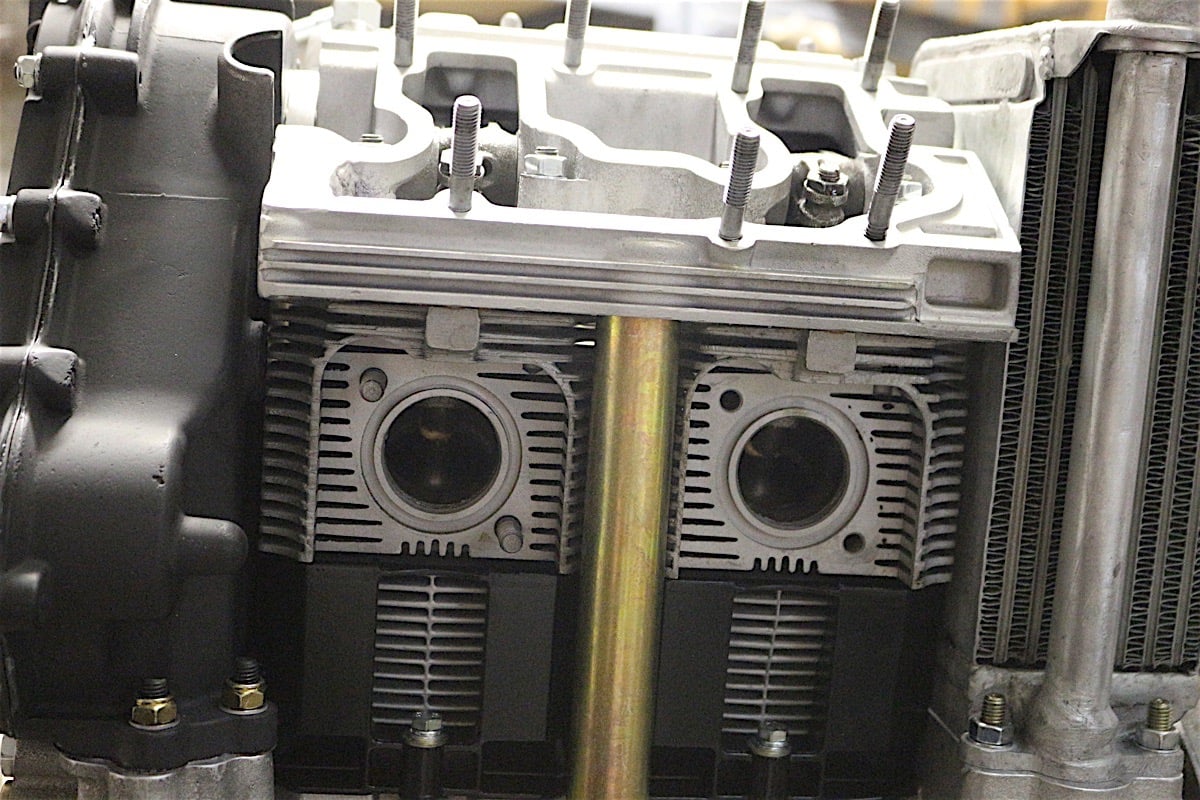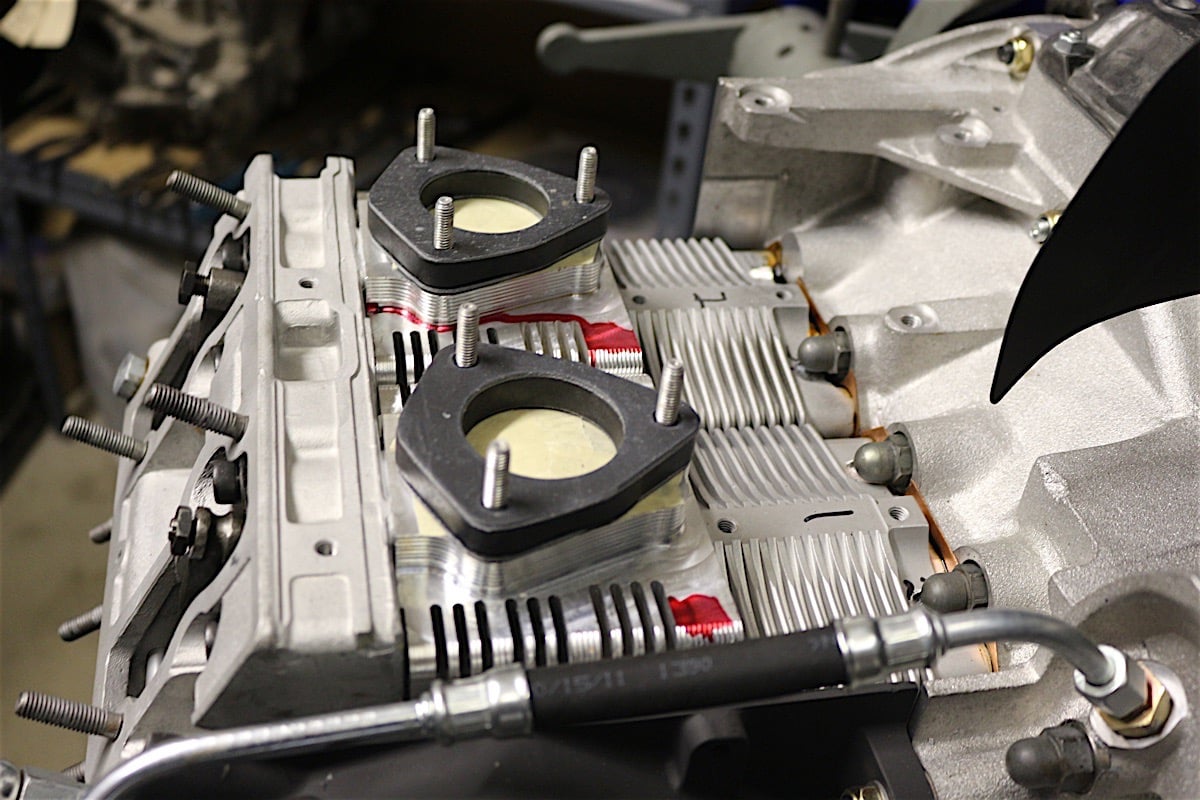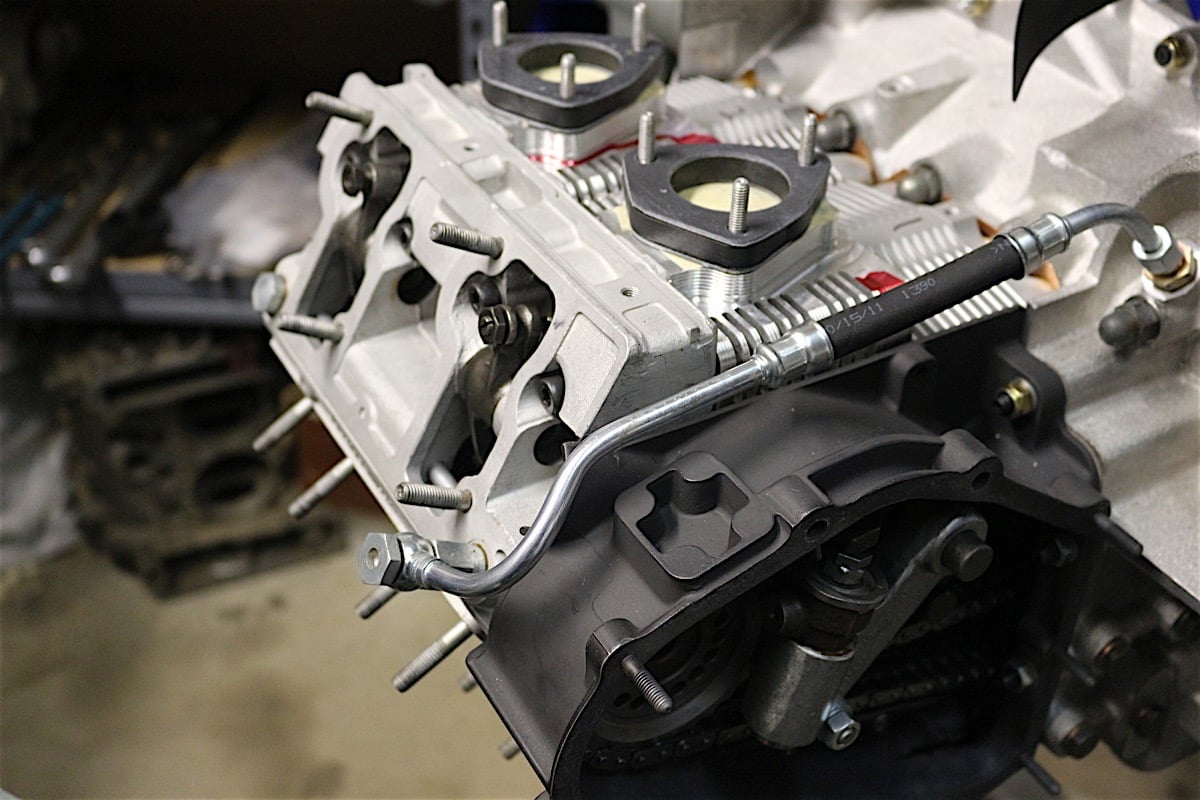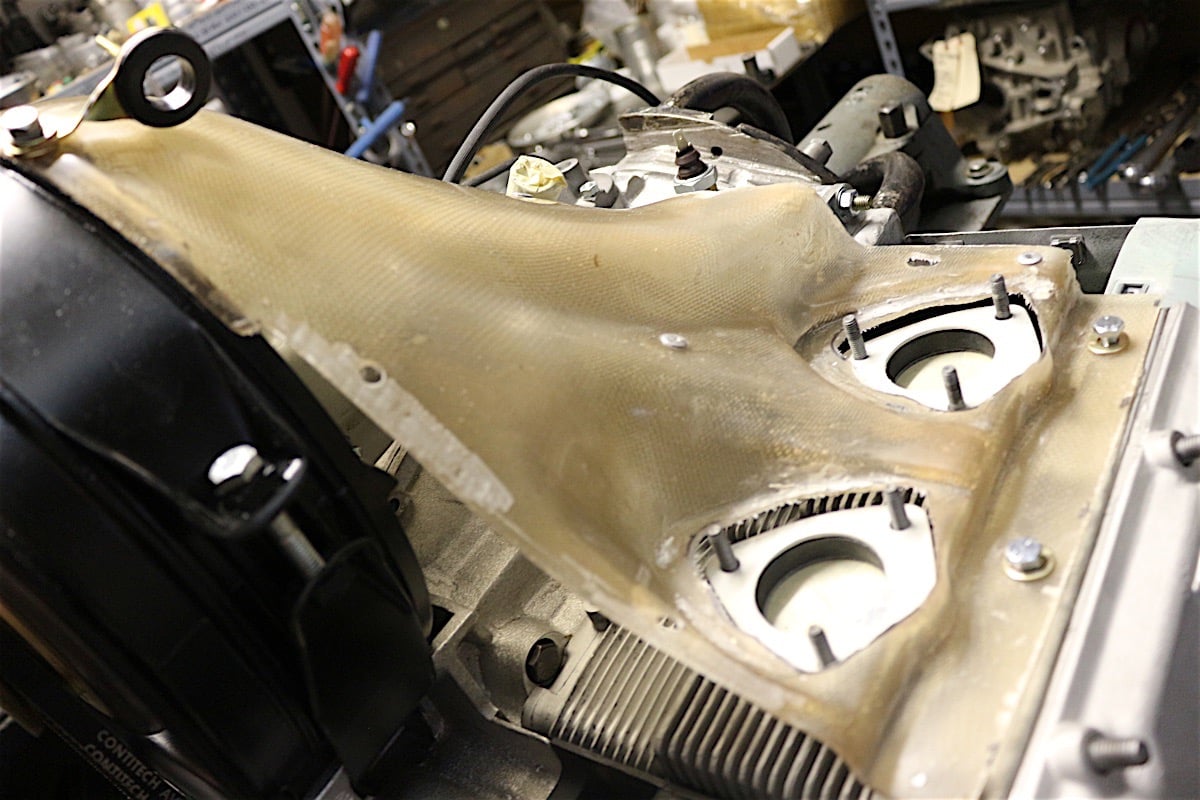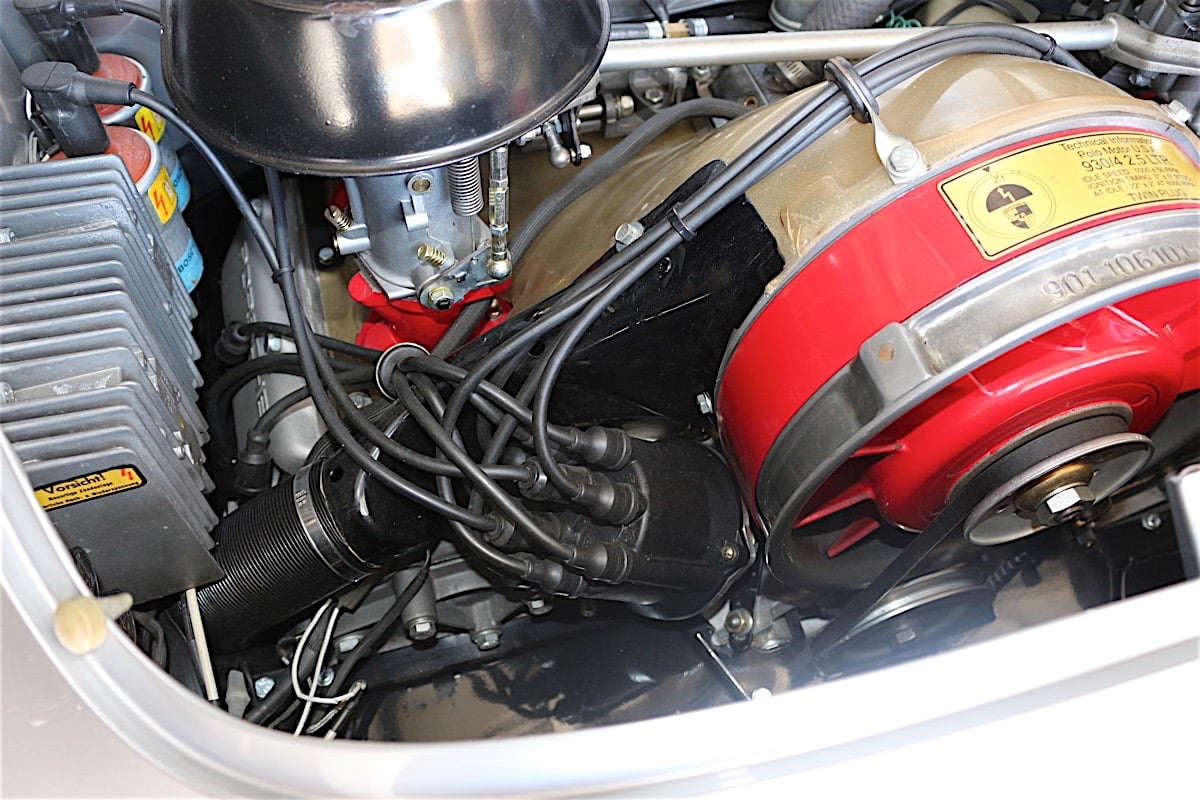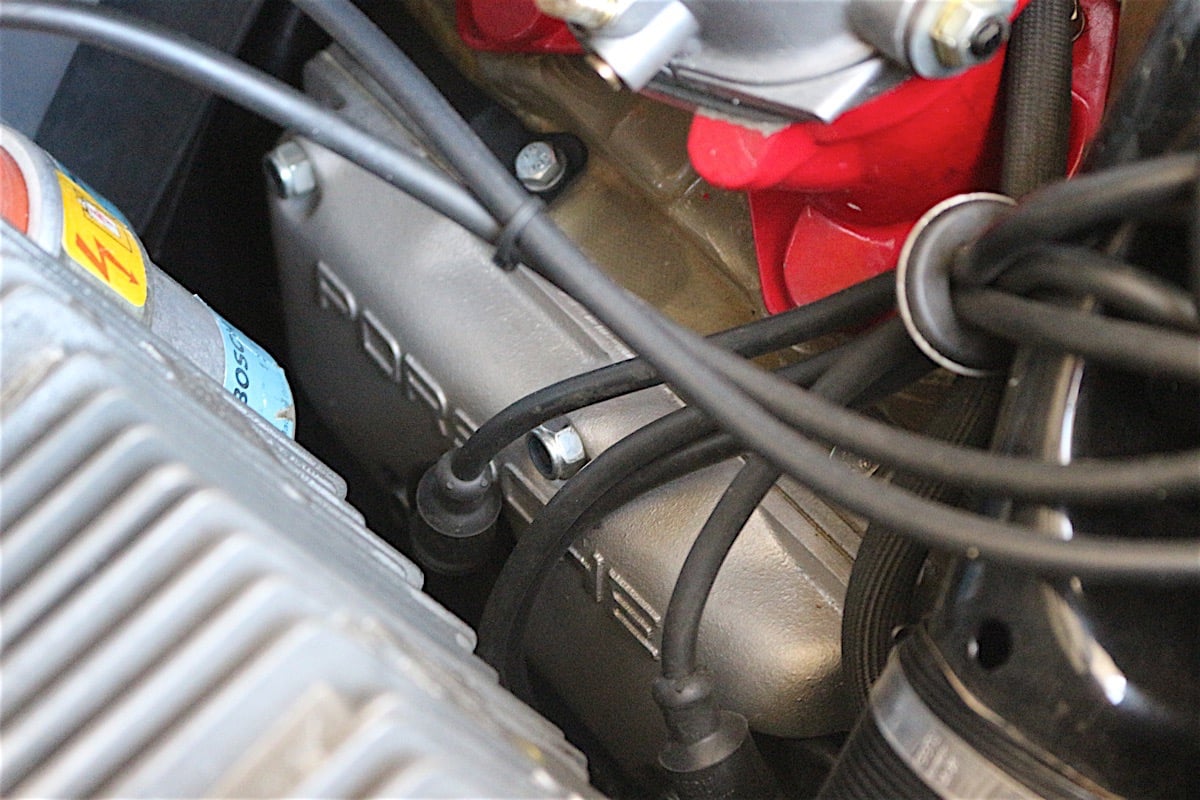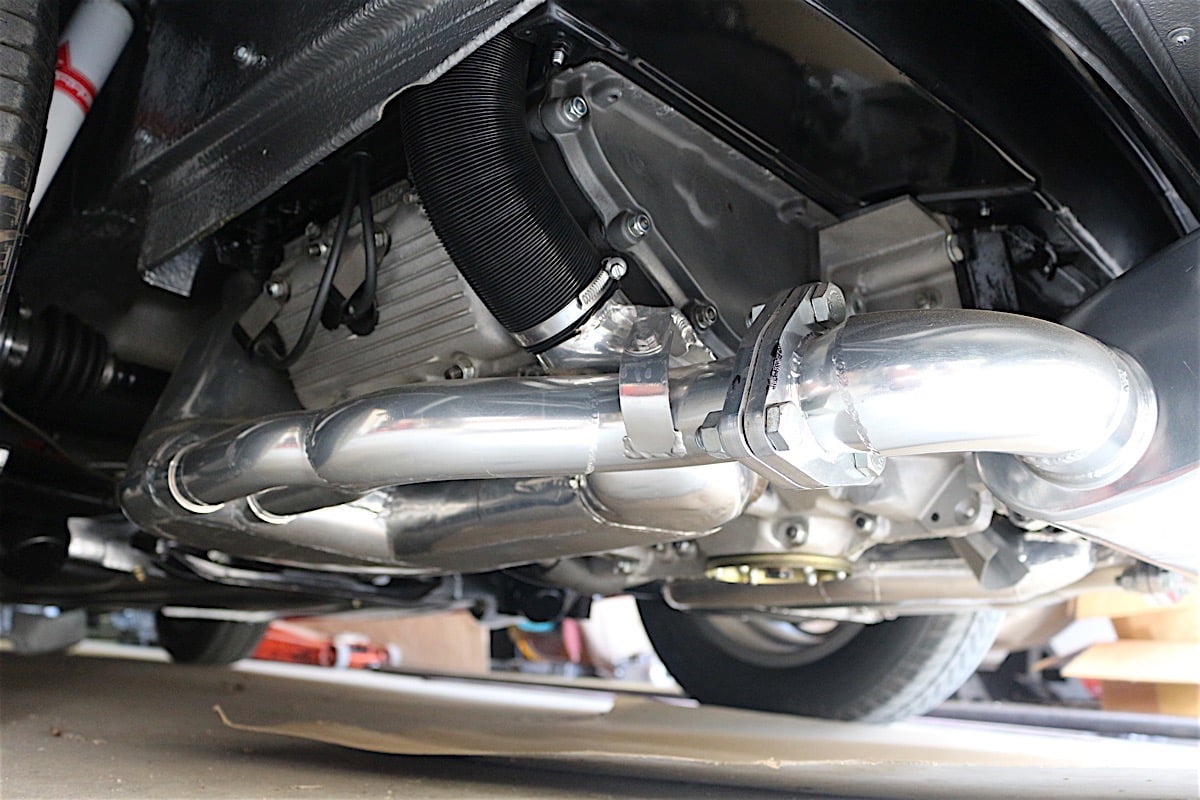 [1]Air-cooled engines have a cult following, one that I’m proud to be a part of. These engines are celebrated for their rugged simplicity, reliability, and light-weight construction. Of course, among car enthusiasts Volkswagen and Porsche are the first names to spring to mind that pioneered the mass adoption of this design. Type-cast into a binary light, the proponents of these powerplants are not either greasy freeloading long-hairs or pompous stuffy doctors — the performance air-cooled community is an innovative bunch, engineers and inspired builders.
[1]Air-cooled engines have a cult following, one that I’m proud to be a part of. These engines are celebrated for their rugged simplicity, reliability, and light-weight construction. Of course, among car enthusiasts Volkswagen and Porsche are the first names to spring to mind that pioneered the mass adoption of this design. Type-cast into a binary light, the proponents of these powerplants are not either greasy freeloading long-hairs or pompous stuffy doctors — the performance air-cooled community is an innovative bunch, engineers and inspired builders.
Tuning culture for the air-cooled market is a palimpsest of both VW and Porsche designs and technology. It’s not uncommon to find hybridized engines including parts from both marques. The once tame and sedate flat-four VW engines are commonly built to nearly twice their delivered displacement, while still retaining their modest packaging size and weight. Porsche 911 6-cylinder engines have found their way into aircraft, desert racecars, and countless track cars. These horizontally opposed engines have a lot to offer for the gearhead that understands the value of packaging horsepower.
A Quest Of Innovation
When it comes to packaging more horsepower in less space, Dean Polopolus [3] has been engineering his way through the puzzle for nearly 30 years. The resurgence of interest in nostalgia racing and outlaw-style builds has unshackled the numbers-matching contingent of enthusiasts. When we think exotic engine we usually gravitate towards more cylinders and more parts — spawning all manner of splices and strange experimental designs. But in the fashion of analytical cubism meeting concrete engineering, Polopolus has created a deconstructed Porsche engine that’s more exotic than the original — while everyone strives to add cylinders, Polopolus is taking them off.
The “Polo” motor as it has been dubbed is a 4-cylinder, horizontally-opposed, overhead cam, 16-valve engine. The benefit of this design being the ability to reap the benefits of the 911 overhead cam design and package it to fit in a traditionally 4-cylinder equipped engine bay, like those found in the VW Type 1 (Beetle), Type 2 (Transporter), Type 3 (Square, Notch or Fastback), Type 181 (Thing), Porsche 356 Speedster, 912 or 914.
 [4]“I’ve been a gearhead all my life and my dad used to buy all types cars, so I would work on all kinds of different stuff. I was in the military and went to Stuttgart — of course I’d worked on Volkswagens before that,” prefaced Polopolus.
[4]“I’ve been a gearhead all my life and my dad used to buy all types cars, so I would work on all kinds of different stuff. I was in the military and went to Stuttgart — of course I’d worked on Volkswagens before that,” prefaced Polopolus.
“When I got out of the service I got into business with a gentleman working on Porsches, and then I sold the shop. I had a ’56 Speedster and I built a very nice example of a pushrod 912 motor; when the president of the Porsche club of Italy saw it he immediately wanted it. So I sold it to him and didn’t have a motor for my Speedster, and I thought, what could I do that would be even better?” And so launched his pursuit of what is arguably the most fetishized air-cooled 4-cylinder.
 [5]
[5]The sight of an 11-blade fan, open timing chain covers and this frontal projection is sure to tighten the trousers of many an air-cooled nut.
The Grit Of Design Details
Of course it’s no simple task to build an engine from scratch, allocating the resources in terms of both finances and expertise is a painstaking task. Solving the problems like routing oil galleys, firing order, custom parts and more takes a lot of thinking through before any action, but Polopolus called on a few key contacts to get the ball rolling.
“The only saving grace for me was that the Germans made the architecture good from the get go — they started making all the bottom ends pretty much the same. I was in construction in the early days, and if you set a foundation for a building and it’s off 1/2 an inch, by the time you get to the fifth floor it will get out of hand. With the 911 they started right, they could put turbochargers and stuff on it and it would stay up to date through the mid 20th century,” Polopolus emphasized.
“I had a German pattern maker make the pattern, complete with all the gates and runners for casting, and a doctor of metallurgy cast the block. It’s taken me 20 to 30 years to get this project to where it is today. People don’t really understand that all this stuff takes time and money, it doesn’t happen overnight, especially when it’s not your only business,” he explained.
With an engine case coming from the foundry to do justice to the original design, Polopolus had the problem of internal components to solve. A standard VW crank wouldn’t do for this project and while picking around the shop of Henry Velasco, he found his solution. “Henry Velasco made a crank for a 392 Hemi, and I was standing out there in Downey, California and he had these Hemi cranks, with my little one sitting right next to them. Mine started out as a remnant of a big stroker Hemi crank, it’s an English chromoly alloy with a proprietary heat treatment,” Polopolus reminisced.
Cardio For The Polo Motor
The key difference between the VW and Porsche engines is the valvetrain. While the VW uses a traditional pushrod 8-valve design, the Porsche has always been envied for its strong respiratory tract — its high-revving nature being the result of a chain driven overhead cam and 4-valve per cylinder arrangement. No overhead cam, air-cooled 4-cylinder Porsches have existed since the venerable 4-cam engines that powered the 550 and 718 Spyders. Polopolus was once again on his own to R&D a solution.
“I went with cast cams and discovered that American metal is not compatible with the German rockers, so then I tried 8620 with a heat treat which worked pretty well. Then, I really got smart and made them out of tool steel — the difference in hardness between the rockers and the tool steel was too much, so it was eating up the rockers and I had to go back,” Polopolus laughed. The final iteration of Polo cams features an 8620 blank with hard-face welded lobes.
While the cranks are Hemi-derived, the Porsche timing chain drive system was another area Polopolus felt the Germans did a fantastic job of engineering.
One of the few remaining Porsche parts that defines the Polo motor are the 911 cylinder heads — they had to be truncated, to two chambers per bank. In the late ’80s and early ’90s when Polopolus started his project, 3.0-liter and 3.2-liter was the displacement ceiling for Porsche, but as the 3.6 came out the market trend gravitated toward the new bigger 911 parts, and so the Polo followed suit.
“Early on when I started, the 3.0-liter and 3.2 were the big motors before the 3.6 came along. Originally, I took a 100 mm bore and put a 76.4 mm stroke to make it a 2.4-liter. At that displacement you need more air, so we ported 3.0-liter heads. It got to the point where everyone wanted to use 3.6-liter stuff, so we machined the block for a 90 mm square pattern for the head studs and now we use 100 mm 964/993 pistons and cylinders,” Polopolus recalled.
Polopolus has a network of sources for 911 cylinder heads.
Timing Is Everything
Before Polopolus could wrap up the idea of a long block on the drawing board, the issue of firing order would have to be addressed. Just pulling two cylinders off of a 6-cylinder engine does not bode well for the spacing between power pulses. Generally, horizontally-opposed engines fire cylinders next to each other consecutively. Polopolus stuck to this engineering trope for good reason.
Polopolus lays up his own composite fan shrouds, and retains the Porsche 911 air deflector veins for even cooling.
“If you cut a motor like the original three and put the nose back on it, it fires, goes 120 degrees, skips 240, fires, and goes 120 — so you have two missing. You can change the firing order — it has to fire consecutively on the same side, but you can change the degrees it turns before it fires on the other side if you cut the crank,” Polopolus outlined.
“When you make a 4-cylinder flat motor just like a Subaru or Volkswagen, two pistons are up and two are down and that’s the only way you can make it fire evenly to hook the exhaust together. On a Porsche 6-cylinder, number one is in back by the distributor and it’s the same on my engine as well, two is in front of that on the left, on the right front is four, and the back is three. In essence it fires 1-4-3-2 just like a Volkswagen, because it has to fire consecutively on one side,” he continued.
 [17]All of the Polo motors feature twin plug ignition, just like the Porsche racing engines of lore. Polopolus explained to us that the progression of the flame front in these engines travels at about 65 mph, and igniting the charge from more than one side helps evenly load the piston. Additionally, the Polo engines run their best with a total ignition advance of only 23 degrees.
[17]All of the Polo motors feature twin plug ignition, just like the Porsche racing engines of lore. Polopolus explained to us that the progression of the flame front in these engines travels at about 65 mph, and igniting the charge from more than one side helps evenly load the piston. Additionally, the Polo engines run their best with a total ignition advance of only 23 degrees.
Rarified Commodities
The allure of the Polo motor is definitely an acquired taste, meat and potatoes this engine ain’t — more an air-cooled cultural delicacy to be appreciated in situ. Polopolus fully recognizes the discerning palate for which he plies his craft, and simply isn’t concerned by those who don’t have a taste for it. A refreshing retort to mass-appeal.
The Polo motor fits neatly in the bay of a 356, with Weber IDA carbs, and an exhaust from Tiger at A1 in Santa Ana, this one bellows out a rich tone.
Like everybody, I sell motors all over the world, and this is a big ticket item, but it’s not for everybody — like Porsche was originally. -Dean Polopolus
Plans for the future are not just more of the same mundane boutique, low number exotica, we kid of course. The latest project is a Polo to rival the power output of the ubiquitously popular crate V8, but in a package that weighs easily 1/4 of the amount and fits in the confines of a 356 Speedster. “I just finished a car, it was a ’58 Porsche A coupe with a special limited slip transaxle in it, geared to do 160 mph. The guys are letting me put a turbocharger on it, it’s going to be scary — 400-500 horsepower,” he reveled. [22]
[22]
Meeting Polopolus was a treat. The man clearly does what he does out of passion for these engines and cars, and constantly underplays his immense efforts. We only expect the outcome to be outrageous, nothing more, nothing less. [23]
[23]

